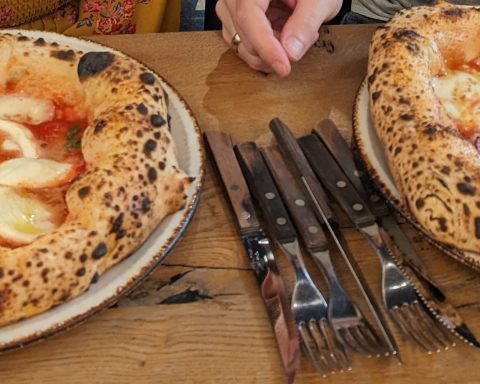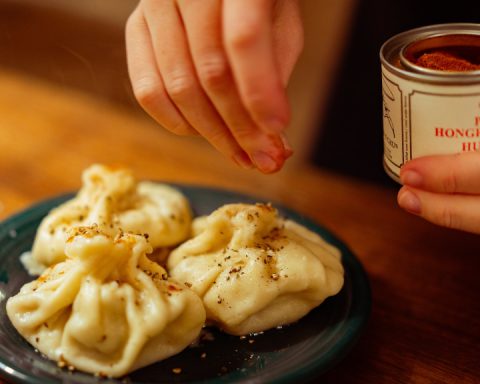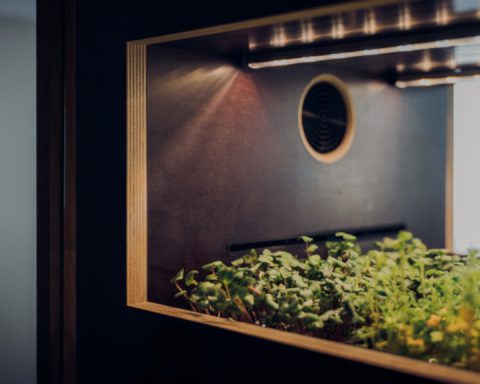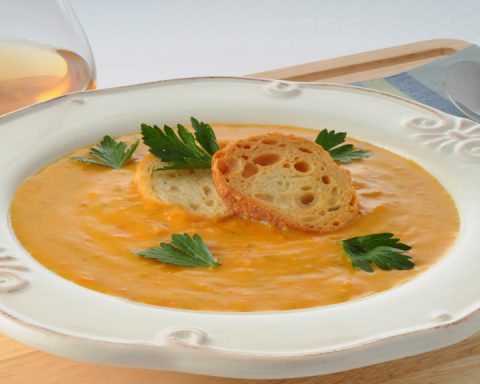I love butter.
I have always loved butter, but my love has deepened even further in recent months.
I like my butter nice and salty and, since moving to Germany, I’ve had trouble finding a good salted butter. Back in Karlsruhe, I’d pop over the border to France and grab several kilos of Normandy butter with flaky sea salt. But since coming to Leipzig, I’ve had extremely slim pickings.
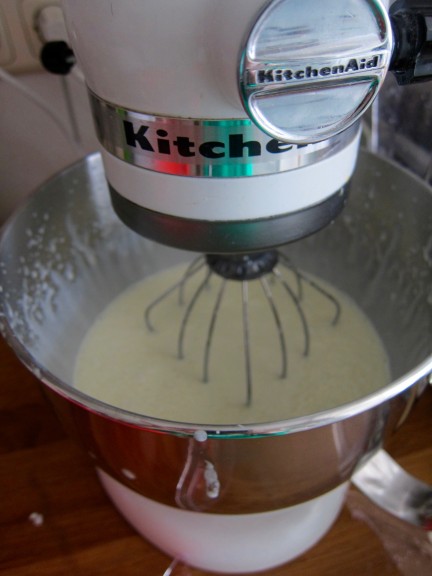
So, the inevitable result was hatching this plan: making my own perfect butter, to perfectly suit my needs.
So, I’ve slowly started, over the past week or two, to build the habit of making butter. I’ve had some time to experiment a little with different recipes and styles. If you like a perfect, creamy and tangy butter on your bread, read on to find out how to make it yourself!
You’d think BUTTER would be a relatively simple and straightforward product, right? You could not be more wrong!
When starting to write this post, I considered myself quite well butter-educated. I was proven profoundly wrong. And I paid the price – by staying up until the wee hours – reading more and more about this delicious spreadable fat.
First of all – butter is cultural, super complex and slightly confusing. There are large differences in butter making and taste between countries and continents.
It does not stop there though: The differences can be seen in how the entire concept of butter in perceived! This is mostly due to history, but those nuances have, with time, become genuine cultural differences and expectations regarding how butter is: how it looks and how it should taste.
To some, these may seem like minute and inconsequential details, but for a butter lover like myself, they are fundamental.
Anyway, at least in Scandinavia and generally cooler climates, butter is as old as civilisation. The story begins when we stopped being hunter gatherers and started domesticating animals: first goats and sheep, then later cattle. At least from the European perspective, the southern, Mediterranean folks had their fancy oils and such, and considered butter a food for peasants and barbarians.
And generally – by the way – though the history of butter goes way back, there is a whole other story of butter in North Africa and the Middle East, where we’re actually talking about clarified butter or ghee. Actual butter would have spoiled quickly in warmer climes. Hence, this genuine butter, as most of we Internet people would know it, has traditions and origins in the cold north.
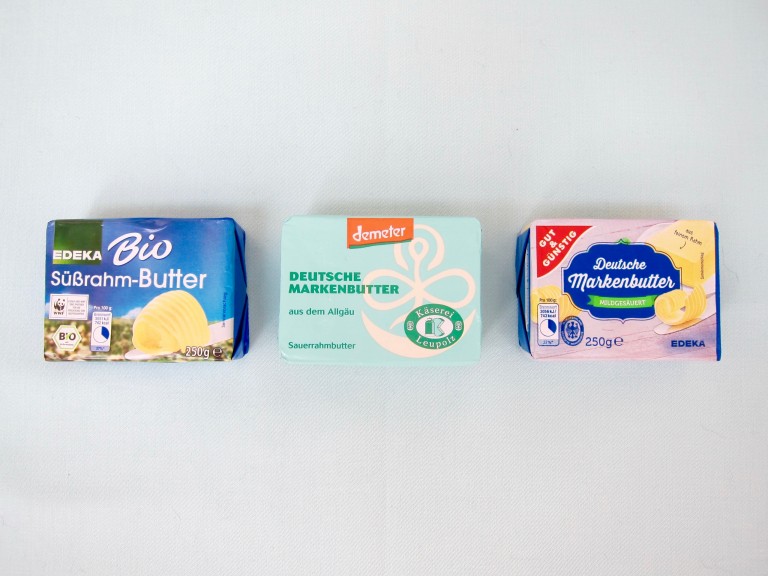
So anyway, what about butter today? There are basically two types of butter:
Sweet cream butter (Süßrahmbutter in German / Imelävoi in Finnish): Butter in its simplest, elemental form. The cream is churned until the fat and buttermilk separate. Very mild in taste.
Cultured butter (Sometimes also called “European butter” / Sauerrahmbutter in German / Hapatettu voi in Finnish): Well, this – for me – is real butter. Before the introduction of modern manufacturing processes, cream was gathered from several milkings.
This meant that the unpasteurised cream would go sour before churning. Cultured butter has this distinct, tangy, “butter-like” flavour, resulting firstly from lactic sugars transforming into lactic acid, but also from the formation of diacetyl during the culturing process.
(I will explain the culturing process a bit further into the recipe.)
There is actually also a third type of butter, which is between the two types: It’s mildly sour or “cultured”, as the cultures are added only after the cream is churned. Amazingly enough, this butter concept actually only has a specific name in German: mildgesäuerte Butter.
Since this type of butter making only emerged after the industrial production of butter – adding the cultures after the milk is churned saves manufacturers precious time and space and is thus more profitable – I have reason to suspect that this kind of butter is also found in other countries where tangy-er, cultured butter is popular.
And as you’ve probably noticed, I like being thorough.
In order to complete my research, I toured several of my local supermarkets and checked the websites of the main butter brands in several countries. Something interesting emerged: excluding Germany, it’s practically impossible to find out which kind of butter you’re buying! French, Finnish and British butter producers, at least, don’t indicate anywhere the type of butter they sell.
In Germany, only a few brands indicate the butter type straight-forwardly. On most, you have to turn the package around and around to find the fine print and, in some cases, it was not mentioned at all.
But alright, we want to make our own cultured butter? If you are in a huge hurry, you can make some-kind-of-your-own-butter by just whipping up cream until it separates. But, as I’m a firm believer in the superior taste of cultured butter, I highly recommend you give this recipe a try.
Magnificent homemade butter
Different kinds of creams and culturing agents produce a different tasting butter. Don’t skimp on the quality of the cream. As it is your main ingredient, you do taste the difference.
I would recommend avoiding UHT-treated cream, as it alters and diminishes that unique dairy taste.
Here’s what I made mine with:
- 6 dl cream
- 3 tbs cultured dairy product (I used buttermilk, but you may just as well use yogurt or sour cream or similar)
- Salt to taste
In a nutshell, 2:1 cream to lactic acid product.
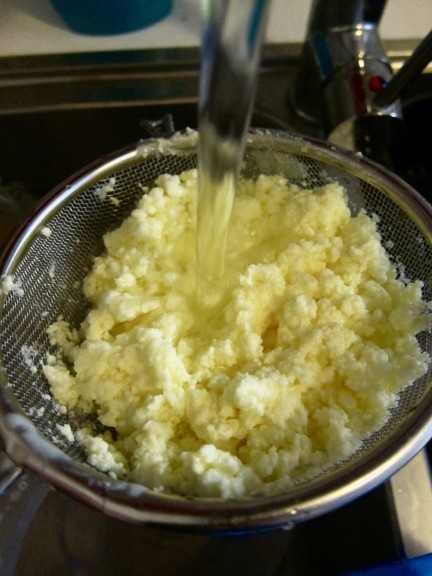
How to make it:
- Start by mixing the cream and the buttermilk and heating them on the stove. I assume this is to speed up the souring process – to give it a lil’ head start. You could do it without heating, too – it might just take anywhere between 18 and 72 hours for the culturing to begin.
- Cover the cream and leave it at room temperature, at least overnight. Could easily be a day too. You’ll know it’s ready when it has thickened a little and it might have a mildly sour smell.
- For the last couple of hours – put the bowl in the fridge to cool.
- Put the mixture in your electric mixer. You could do it by hand, too – but you need some serious muscles and / or persistence. I’ve never even dared to try. Put the mixer on high speed and let it mix for around 5-10 minutes, until the buttermilk and butter separate. Monitor the mixing and turn down the speed when you notice it separating. And here’s a piece of advice: This part of making butter is extremely messy – as the buttermilk begins to separate, it splashes around uncontrollably and everywhere. Even with a splash guard, I cover my KitchenAid tightly with a kitchen towel or two.
- Pour the buttermilk and butter into a sieve; save the buttermilk for later use. This is the traditional buttermilk, the real deal. Drink it as is, put it in a smoothie, bake a soda bread or flat breads, make pancakes, bake a cheesecake or add it to a milkshake.
- Now it’s time to rinse the butter. There are many ways to do this, but I personally prefer to run the butter under cold tap water until the water runs clear. It’s important to turn the butter around while doing this. You can also use a cheese cloth here.
- Mix and squeeze the butter further in a bowl. This stage is important because it gets rid of the last drops of buttermilk and water. Keep mixing until practically no water separates from the butter anymore. I’ve noticed that, if a little too much water/buttermilk is left in the butter, it doesn’t spread so well and sometimes has a slightly grainier texture. So to make it smooth, keep mixing!
- Add salt, if that’s your thing. Put in a container or wrap it in wax paper and chill it.
Spread on.

The original version of this post was published in 2016 on Sara’s “Practicalities” blog (currently under renovation), of which the self-professed “household nerd” says: “This is a place for crossing Europe by train, hunting mushrooms, mending rubber boots and storing truffles. It’s curing clay pots, roasting reindeers and making too many Rumtopfs. Basically, this is a place for all things home and tradition.” Sara, who hails from Finland, now lives and works in Leipzig.






